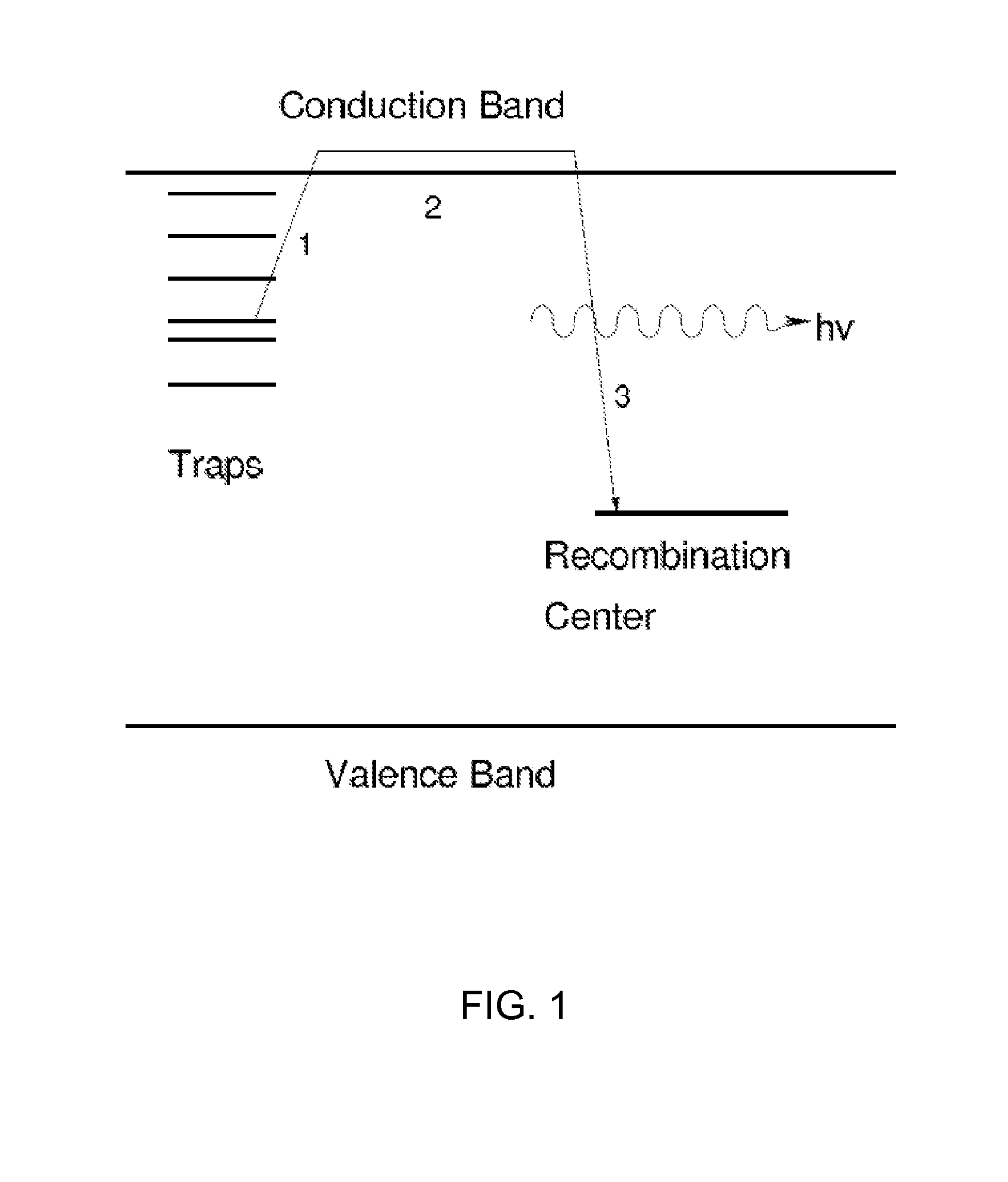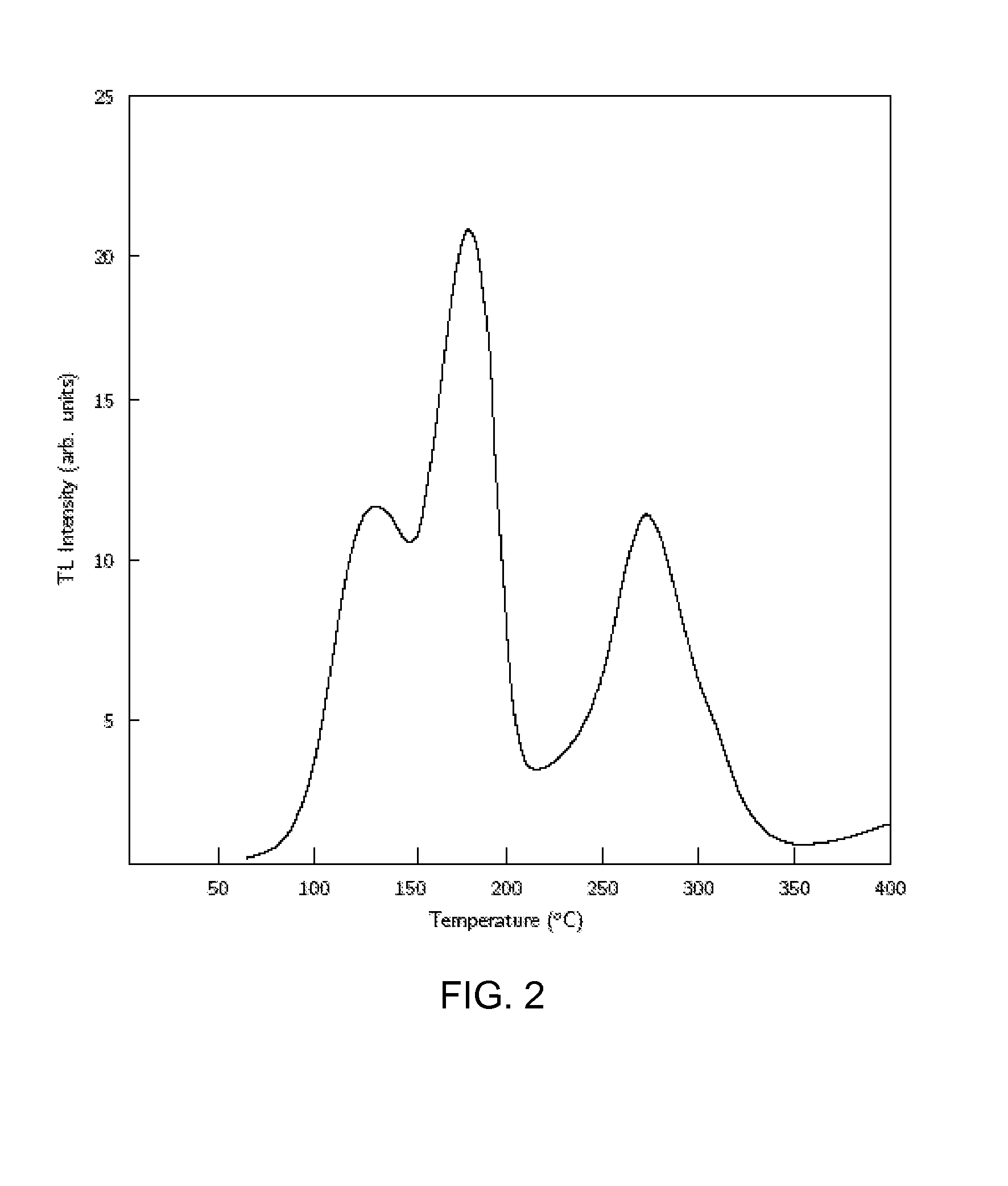Devices and methods for assessing a sample's temperature exposure history
a technology of temperature exposure history and device, which is applied in the direction of instruments, thermometers using mean/integrated values, heat measurement, etc., can solve the problems of excessive heat damage, variable products and components may be damaged, and damage to turbine blades
- Summary
- Abstract
- Description
- Claims
- Application Information
AI Technical Summary
Problems solved by technology
Method used
Image
Examples
Embodiment Construction
Definitions and Overview
[0029]Before describing the invention in detail, it must be noted that, as used in this specification and the appended claims, the singular forms “a,”“an,” and “the” include plural referents unless the context clearly dictates otherwise. Thus, for example, reference to “a charge-carrier trap” includes one or more charge-carrier traps, reference to “a trap-releasing temperature” includes a single trap-releasing temperature as well as a range of trap-releasing temperatures and the like.
[0030]In describing and claiming the present invention, the following terminology will be used in accordance with the definitions set out below.
[0031]The term “band” as used herein in its ordinary solid-state physic sense and refer to a range of very closely spaced electronic energy levels in solids, the distribution and nature of which determine the electronic properties of a material. For example, the term “valence band” refers to electronic states with the highest range of ele...
PUM
 Login to View More
Login to View More Abstract
Description
Claims
Application Information
 Login to View More
Login to View More - R&D
- Intellectual Property
- Life Sciences
- Materials
- Tech Scout
- Unparalleled Data Quality
- Higher Quality Content
- 60% Fewer Hallucinations
Browse by: Latest US Patents, China's latest patents, Technical Efficacy Thesaurus, Application Domain, Technology Topic, Popular Technical Reports.
© 2025 PatSnap. All rights reserved.Legal|Privacy policy|Modern Slavery Act Transparency Statement|Sitemap|About US| Contact US: help@patsnap.com



